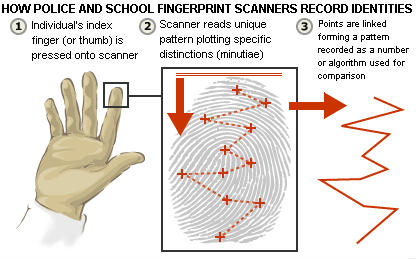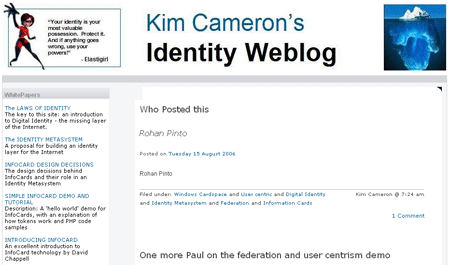 Tateru Nino at Second Life Insider has done a roundup of age verification issues arising from Second Life's experiment in controlling access to adult content.
Tateru Nino at Second Life Insider has done a roundup of age verification issues arising from Second Life's experiment in controlling access to adult content.
There's a lot of talk about age/identity verification going on, so I've done a pile of reading of material and logs (thanks for everyone who has provided links, logs and other information to source from) and condensed them into a not inconsiderable bulleted list, below the fold.Longer than your hand, people. Grab a cup of coffee.
- Credit cards do not provide proof of age. In some areas and with some card providers you can obtain a credit card compatible card before you can talk.
- Verification costs. It will be available at a token fee for premium account holders, but the brunt of the verification costs apparently will be borne by basic account holders. Linden Lab is passing along the costs of verification.
- Mobile phones do not provide proof of age. In the UK, more children under 12 possess a mobile phone than adults over 18. In the USA, almost 50% of children have a mobile phone.
- Driver's licences are not as widely held as you might think. Particularly the old, infirm or handicapped may not possess them. Areas with highly developed public transport systems, or poorer nations may have low penetration of these credentials.
- Online verification does not verify the person, only the validity of the documentation that person provides. The person need not provide their own documentation for verification to be successful. Therefore, this system can only realistically be used to shift blame and does not constitute a method of verification or trust.
- The status of a minor who has provided false verification information can (apparently) no longer be contested. If it says they're of a certain age, would it be harassing behavior to attempt to challenge that?
- Linden Lab is apparently wishes to use a third-party company to keep verification costs down, and to prevent access to or storage of verification information by Linden Lab employees.
- The age at which you are considered to be permitted to access ‘adult content’ varies from country to country. In most, the age varies between 12 and 25. A very few jurisdictions do not permit it under any circumstances. In most US Jurisdictions the age for the apparent class of adult content Linden Lab intends to grant access to would be 21, not 18.
- Having taken steps to attempt to verify the age of a user, and then granted them access to adult content, does Linden Lab them become liable if you are still not eligible to be transmitted adult content in your jurisdiction? Does it even matter if the age/identity is accurate or not?
- The verification provider may not demand or require any information from you. However, they are under no obligation to provide verification for you if you do not willingly provide it.
- Integrity Services was initially given as the verification provider, however there is good cause to believe that the provider will change before plans go ahead.
- Merely requesting an SIN identification from a Canadian citizen constitutes a legal offense. This policy may extend to other forms of identifying information in various countries.
- Linden Lab provides only very vague guidelines for what does and does not constitute ‘adult content’. These are “adult content is that which is overtly, graphically, or explicitly sexual in nature or intensely violent”, which obviously leaves a lot of open questions.
- The guidelines of most nations are vague on what constitutes adult content. In some cases, certain kinds of political content may fall under this classification. In India, “scenes that are a threat to the integrity to the nation, and those which disturb the friendly peace between nations” are classifiable as adult content.
- Flagging parcels that contain adult content is mandatory.
- Adult content flagged parcels must be within Mature sims.
- It is inevitable that the judgement of an individual based on their own society's and community's standards and norms will unintentionally disagree with the judgement of one or more other residents or Linden Lab staff members. What will happen then? Will Linden Lab exercise editorial control, or assign punishments or penalties?
- Verification may not be accessible to Linden Lab or verification service employees but must be archived for a period of time that may changed or extended by law before that that period expires. Can it be extended by other means (eg: Company policy?).
- Archived verification data may be accessed during an audit. Who can initiate an audit of this data, and under what circumstances?
- Will this archived verification data be subject to the European Union's DPA legislation, as would be required if any EU citizen's data is stored/archived?
- Do you know what your nation's policy is on providing your passport number to overseas third parties?
- The Second Life website already requests that users state using a check box that they are over the age of 18. By checking this box, users are making a statement that may be held as truth in a court of law. In short, they can and will be held responsible if this statement is later shown to be untrue. Why is it necessary for Linden Lab to perform an expensive operation like this that appears to only increase their overall legal exposure? What are we missing?
The author concludes:
Whew. What did I miss?




 Once you understand the possibility of breach, you can calculate the associated risks, and build the technology that has the greatest chance of being safe. You can't do this if you don't understand the risks. In this sense, all you can do is manage your risk.
Once you understand the possibility of breach, you can calculate the associated risks, and build the technology that has the greatest chance of being safe. You can't do this if you don't understand the risks. In this sense, all you can do is manage your risk.